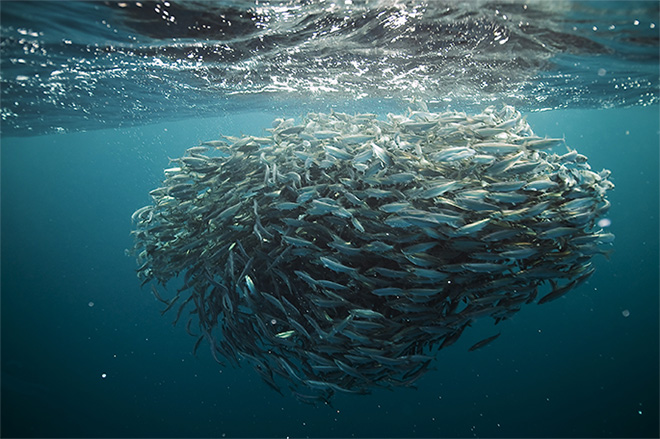Texas A&M’s College of Veterinary Medicine & Biomedical Sciences Researcher’s Study Reveals the Underlying Genetic Diversity of One of the World’s Most Abundant Fish
COLLEGE STATION, Texas – The Atlantic herring-one of the world’s most abundant fish and historically a staple of the Northern European diet-has recently helped scientists understand how species adapt and evolve. Previous studies only examined a few genes and suggested that different groups of the Atlantic herring were genetically indistinguishable despite marked differences in behavior, such as when they reproduce and the salinity of their habitat. However, a study published in eLife and led by Dr. Leif Andersson, professor at Texas A&M; University and Uppsala University in Sweden, revealed that there is in fact much underlying genetic diversity between various groups of herrings.

In the study, researchers sequenced the whole genomes of several groups of Atlantic herring, including both herring that live in the high-salinity Atlantic Ocean and the low-salinity Baltic Sea. The study also compared herrings that spawned in the fall versus in the spring. A total of 500 loci-or locations on chromosomes-were identified as being different between the various herring groups. This genetic diversity indicates how herring are able to adapt to varying conditions.
“The new study reveals that the Atlantic herring is a near ideal model to study genes underlying ecological adaptation,” said Andersson. “Firstly, it is highly adaptable and it shows a considerable diversity in spawning time. Secondly, the population size is enormous which makes random fluctuations in the frequency of gene variants of minor importance. Thus, the signal-to-noise ratio for detecting natural selection is exceptionally good in this species.”
“By comparing the genome sequences between fall-spawning and spring-spawning population samples, Dr. Leif Andersson and colleagues identified a number of potential genetic factors that affect spawning time,” said Dr. James Cai, assistant professor in the Department of Veterinary Integrative Biosciences (VIBS) at the CVM, who was not an author of this study. “These genetic determinants for the timing of reproduction can be used as markers for stock assessment, which has important implications for sustainable fishery management.”
Prior to this study, scientists wondered how it was possible that these groups of herrings could have such distinct behaviors despite being so genetically similar. They came up with two possible explanations. One explanation suggested that herrings were flexible and could adapt to a range of environments, meaning their genetics did not need to change. The other explanation was that the differences were in the genes that had not yet been identified.
“I was involved in one of these early studies as an undergraduate student at Stockholm University in the late 1970s, and during the last 35 years I have wondered which of these explanations is the correct one,” Andersson said. “I was convinced that by applying the new sequencing technologies that have revolutionized biology, we would eventually get the final answer.”
A number of the identified genetic differences do not have a known function, but finding these differences lay the foundation for future research. Additionally, this discovery is expected to have implications to understanding speciation and sustainable population management.
“This study exemplifies how the population-level genome sequencing can help us understand the genetic basis of adaptation of animals to their habitats,” Cai said. “Herring, unlike zebrafish and stickleback, is not a model fish species commonly used in genetic studies. The availability of the genome information has made herring an emerging model, which is ideal for studying salinity adaptation.”
“I am convinced that further research on this rich collection of genes associated with ecological adaptation will lead to new basic knowledge about gene functions that will be relevant also for human medicine since the majority of genes in herring are also found in humans and are expected to have similar functions,” Andersson said.
“I congratulate Dr. Andersson and his team on another stunning piece of work. This study is remarkable not only for its boldness and breadth, but even more for its implications for species adaptation and survival in a changing climate,” said Dr. Evelyn Tiffany-Castiglioni, head of VIBS.


